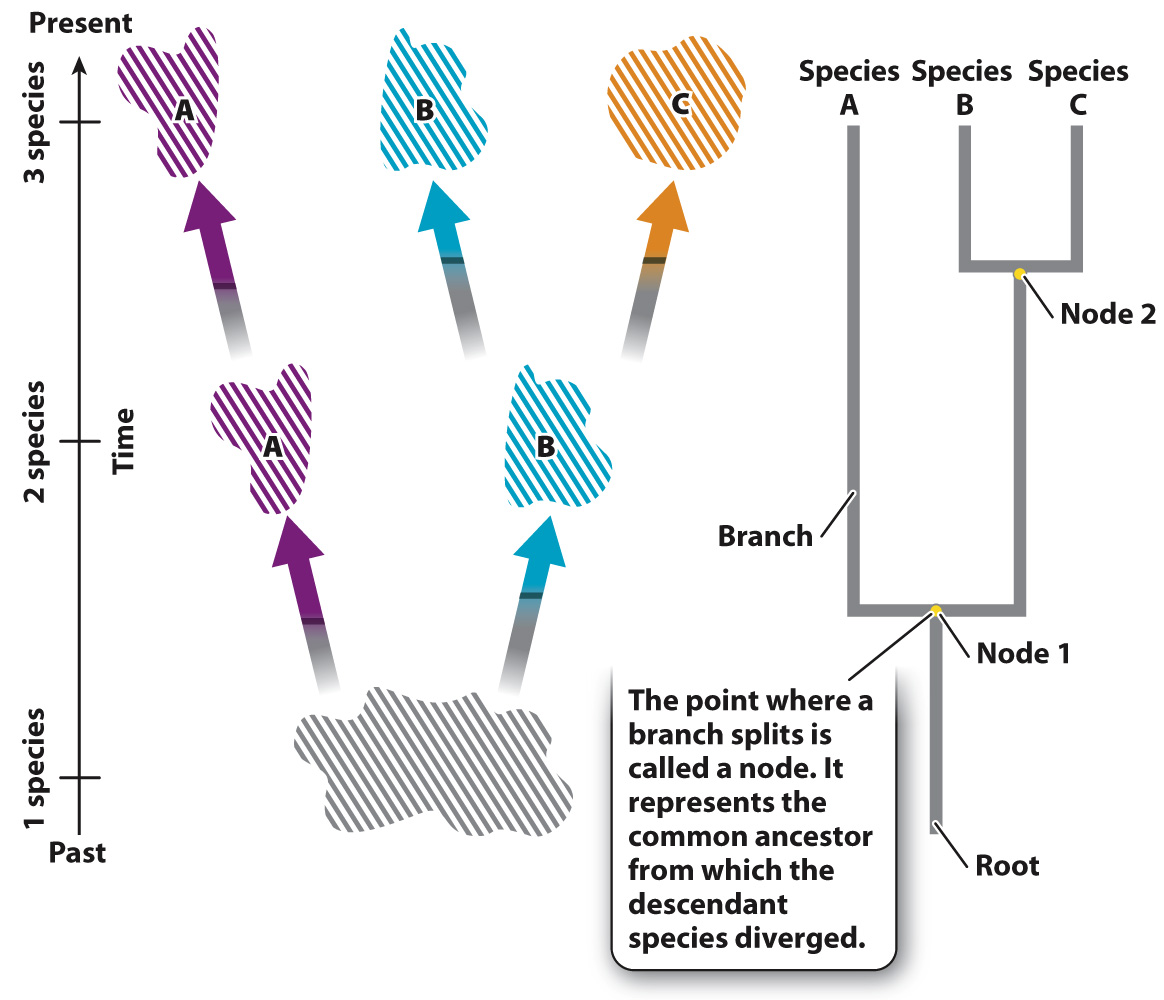23.1 Reading a Phylogenetic Tree
Chapter 22 introduced the concept of speciation, the set of processes by which physically, physiologically, or ecologically isolated populations diverge from one another to the point where they can no longer produce fertile offspring. As illustrated in Fig. 23.1, speciation can be thought of as a process of branching. Now consider what happens as this process occurs over and over in a group through time. As species proliferate, their evolutionary relationships to one another unfold in a treelike pattern, with individual species at the twig tips and their closest relatives connected to them at the nearest fork in the branch, called a node. A node thus represents the most recent common ancestor of two descendant species.

FIG. 23.1 The relationship between speciation and a phylogenetic tree. The phylogenetic tree, on the right, depicts the evolutionary relationships that result from the two successive speciation events diagrammed on the left.